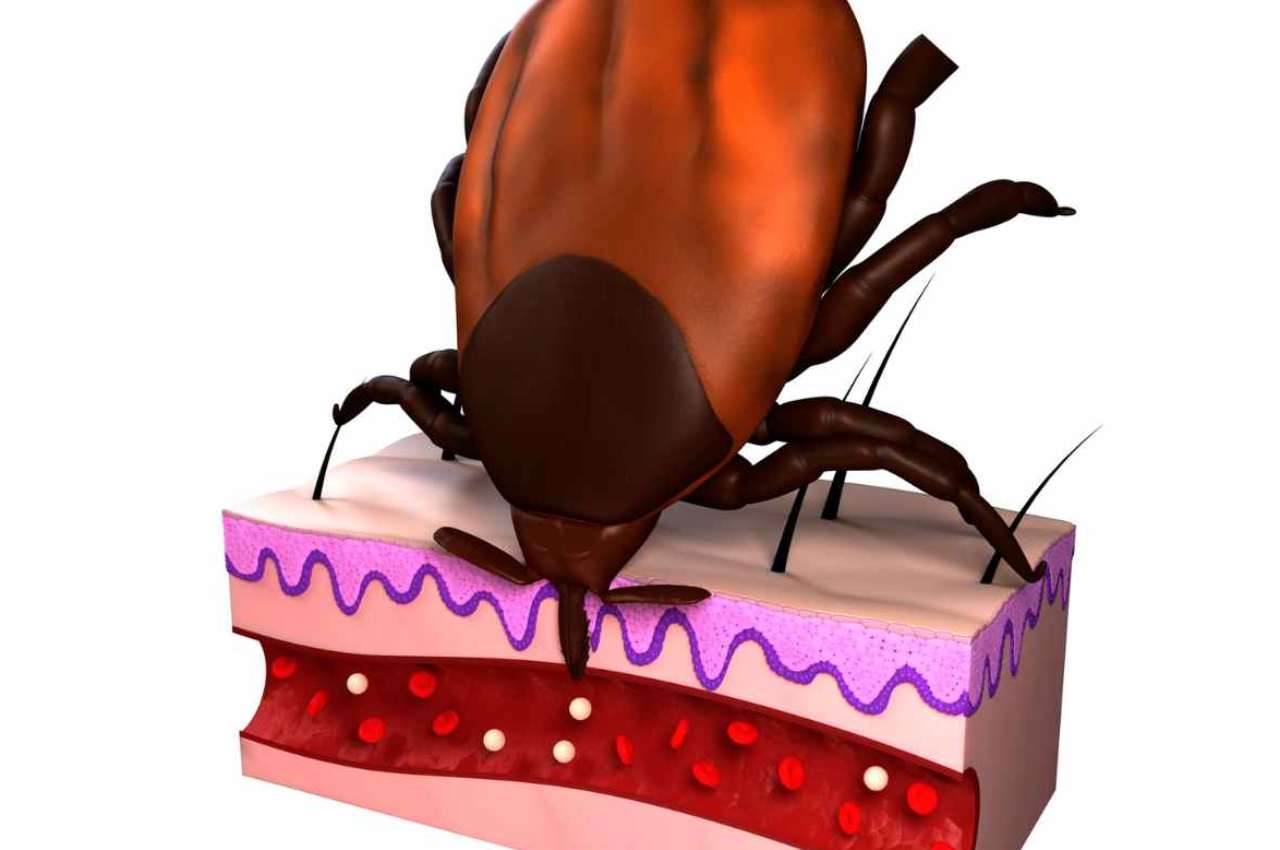The number of ticks has increased and the areas where they proliferate have expanded, so experts are divulging advice for self-protection.
Perhaps until today the danger of ticks was underestimated but now the number of bites (and above all of consequent infections) is increasing and it is advisable to know what to do to protect yourself.
The tick penetrates deep into the skin to suck blood
The last case concerns one 4 year old girl that a few days after being bitten she felt very ill, was admitted to the hospital and was diagnosed with Lyme disease.
If until recently tick activity was concentrated in the summer, now it is climate change has allowed for a wider window of time and also of geographical expansion. Here’s what to watch out for and how to defend yourself against this new health hazard.
How do ticks bite humans
We know that ticks live outdoors and that generally they seek out animal prey to feed on. For these insects, there is no difference between the species because they seek blood and can use that of a deer, a squirrel, a mouse, even some birds and therefore also of man.
The ideal habitat of ticks is where it is found dense vegetation, tall grass and hot-humid climates. But some species they also do well in woods where the climate is cooler and dry. Even the dog tick also proliferates where there is short grass, and therefore it is understood that this type of insect can be found wherever there are potential animals/preys.
Ticks don’t jump from one animal to another, they just jump they position themselves on top of the plants waiting for the passage of a potential “victim”, including man. There is no pain when you are bitten by a tick because they inject some sort of anesthetic as they insert their beaks into the skin.
Depending on the species, the tick remains embedded in the skin for several hours or several days and even weeks. When she’s finished her meal, she just peels off on her own.
What are the risks of a tick bite?
We said above that ticks can transmit numerous diseases, and it is so, even if technically the bite itself is not dangerous.
In our country, ticks are a vehicle for viruses and bacteria that can trigger various pathologies, the most frequent being:
tick-borne encephalitis or TbeLyme diseaseof rickettsiosistularemiatick-borne meningoencephalitisl’ehrlichiosi.
What are the tips disclosed by experts to avoid tick bites as much as possible?
Ticks have always been around and therefore fortunately they are insects from which we can protect ourselves with a few precautions.
To remove a tick you can use tweezers – InformazioneOggi.it
In general it is it is preferable to avoid going to the woods or where there are brushwood and tall grass and dense without adequate protection.
They must be preferred long, light colored dresses – color that also protects against other insects such as wasps and mosquitoes – and closed shoes. Spray repellents are a great deterrent.
Once you get home, a thorough inspection of the body should be doneto check for ticks.
If we find one stuck in the skin we have to remove it with tweezers, without squeezing it and with a decisive move because we must prevent the head from remaining inside the meat. If in doubt, go to the pharmacy or your doctor healing.
To protect yourself from tick-borne meningoencephalitis you can get the anti-TBE vaccineWhile mRNA vaccines are being studied for Lyme diseasenot yet available on the market.
